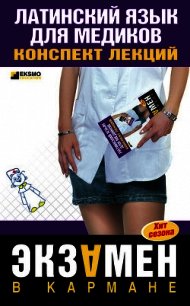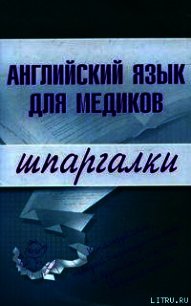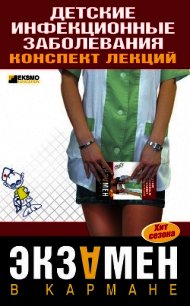Английский язык для медиков: конспект лекций - Беликова Елена (книги хорошего качества TXT) 📗
Distribution of lymphatics is ubiquitous with some notable excep tions, including epithelium, cartilage, bone, central nervous sys tem, and thymus.
New words
plasma – плазма
extracellular – внеклеточный
component – компонент
aqueous – водный
solution – решение
proteins – белки
inorganic – неорганический
salts – соли
organic – органический
com pounds – составы
albumin – альбумин
to maintain – поддерживать
globulins – глобулины
alpha – альфа
beta – бета
gamma – гамма
fibrinogen – фибриноген
equilibrium – равновесие
lymphatic – лимфатический
vessel – сосуд
endothelium – эндотелий
attenuated – уменьшенный
circulation – обращение
lymph – лимфа
distribution – распределение
ubiquitous – вездесущий
notable – известный
Перед названиями наук, учебных предметов и языков артикль не употребляется.
E. g. He studies _ chemistry.
I speak _ English.
Заполните пропуски, где необходимо.
1. My friend's. flat is very comfortable.
2. There are… three rooms in… flat:… living-room,… study and. bedroom.
3… living-room is not very large.
4… walls in… living-room are blue.
5. There are. pictures on. walls.
6. There is… table in… middle of… room with some chairs around it.
7. To… left of… door there is… sofa.
8. Near… sofa there are… two large armchairs.
9. They are very. comfortable.
10. There is. piano in my friend's liv ing-room.
11… piano is to… right of.
12… doors of… bedrooms and… study are small.
13. When my grandfather was… young man, he studied… physics.
14. Do you speak… Spanish?
15. My uncle is… great specialist in… biology.
16. Japanese is more difficult than… French.
17. We listened to. very interesting lecture.
18. My father speaks… English and… French, but he does not speak… German.
19. We had… lesson of… mathematics yesterday.
20. We wrote. test in… mathematics.
Answer the questions.
1. What component of blood is plasma?
2. What components does the plasma have?
3. Where do large blood proteins remain?
4. Do large blood proteins equilibrate with the interstitial fluid?
5. What colour is serum?
6. Where is serum separated from?
7. What com position does the serum have?
8. What do lymphatic vessels consist of?
9. How do lymphatics serve?
10. How is developed the smooth muscle in large lymphatic ducts?
Make the sentences of your own using the new words (10 sentences).
Find the definite and indefinite articles in the text.
ЛЕКЦИЯ № 17. Hematopoietic tissue
Hematopoietic tissue is composed of reticular fibers and cells, blood vessels, and sinusoids (thin-walled blood channels). Myeloid, or blood cell-forming tissue, is found in the bone marrow and provides the stem cells that develop into erythrocytes, granulocytes, agranulo-cytes, and platelets. Red marrow is characterized by active hematopo-iesis; yellow bone marrow is inactive and contains mostly fat cells. In the human adult, hematopoiesis takes place in the mar row of the flat bones of the skull, ribs and sternum, the vertebral column, the pelvis, and the proximal ends of some long bones. Erythropoiesis is the process of RBC formation. Bone marrow stem cells (colony-forming units, CFUs) differentiate into proerythroblasts under the influence of the glycoprotein erythropoietin, which is produced by the kidney.
Proerythroblast is a large basophilic cell containing a large spherical euchromatic nucleus with prominent nucleoli.
Basophilic erythroblast is a strongly basophilic cell with nucleus that comprises approximately 75% of its mass. Numerous cytoplasmic polyribosomes, condensed chromatin, no visible nucleoli, and continued hemoglobin synthesis characteristics of this cell.
Polychromatophilic erythroblast is the last cell in this line undergoes mitotic divisions. Its nucleus comprises approximately 50% of its mass and contains condensed chromatin which appears in a «checker-board» pattern. The polychnsia of the cytoplasm is due to the increased quantity of acidophilic hemoglobin combined with the basophilia of cytoplasmic polyribosomes.
Normoblast (orthochromatophilic erythroblast) is a cell with a small heterochromatic nucleus that comprises approximately 25% of its mass. It contains acidophilic cytoplasm because the large amount of hemoglobin and degenerating organelles. The pyknotic nucleus, which is no longer capable of division, is extruded from the cell.
Reticulocyte (polychromatophilic erythrocyte) is an immature aci-dophilic denucleated RBC, which still contains some ribosomes and mitochondria involved in the synthesis of a small quantity of hemoglobin. Approximately 1% of the circulating RBCs are reticulocytes.
Erythrocyte is the mature acidophilic and denucleated RBC. Erythrocytes remain in the circulation approximately 120 days and are then recycled by the spleen, liver, and bone marrow.
Granulopoiesis is the process of granulocyte formation. Bone marrow stem cells differentiate into all three types of granulocytes.
Myeloblast is a cell that has a large spherical nucleus containing delicate euchromatin and several nucleoli. It has a basophilic cytoplasm and no granules. Myeloblasts divide differentiate to form smaller pro-myelocytes.
Promyelocyte is a cell that contains a large spherical indented nucleus with coarse condensed chromatin. The cytoplasm is basophilic and contains peripheral azurophilic granules.
Myelocyte is the last cell in this series capable of division. The nucleus becomes increasingly heterochromatic with subsequent divisions. Specific granules arise from the Golgi apparatus, resulting in neu-trophilic, eosinophilic, and basophilic myelocytes.
Metamyelocyte is a cell whose indented nucleus exhibits lobe formation that is characteristic of the neutrophil, eosinophil, or basophil. The cytoplasm contains azurophilic granules and increasing numbers of specific granules. This cell does not divide. Granulocytes are the definitive cells that enter the blood. Neutrophilic granulocytes exhibit an intermediate stage called the band neutrophil. This is the first cell of this series to appear in the peripheral blood.
It has a nucleus shaped like a curved rod or band.
Bands normally constitute 0,5-2% of peripheral WBCs; they subsequently mature into definitive neutrophils.
Agranulopoiesis is the process of lymphocyte and monocyte for mation. Lymphocytes develop from bone marrow stem cells (lympho-blasts). Cells develop in bone marrow and seed the secondary lympho-id organs (e. g., tonsils, lymph nodes, spleen). Stem cells for T cells come from bone marrow, develop in the thymus and, subsequently, seed the secondary lym phoid organs.
Promonocytes differentiate from bone marrow stem cells (mono-blasts) and multiply to give rise to monocytes.
Monocytes spend only a short period of time in the marrow before being released into the bloodstream.
Monocytes are transported in the blood but are also found in connective tissues, body cavities and organs.
Outside the blood vessel wall, they are transformed into macropha-ges of the mononuclear phagocyte system.
Thrombopoiesis, or the formation of platelets, occurs in the red bone marrow.
Megakaryoblast is a large basophilic cell that contains a U-shaped or ovoid nucleus with prominent nucleoli. It is the last cell that undergoes mitosis.




